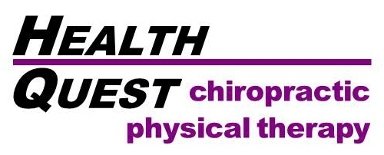

When you think of the spine, you probably think of large, bony joints. However, hiding between those joints is a very important bodily structure: the vertebral disc. Our spines cannot perform normal functions without healthy discs cushioning and supporting them. So when disc problems appear, patients want immediate relief.
That’s where we come in. Health Quest’s team can evaluate your spinal discs, and - based on your medical history - determine a likely cause and a best course of action when it comes to treatment. Using a wide variety of modalities, and by making sure patients are comfortable with their therapy program every step of the way, our staff will help you address your spinal issues as thoroughly as possible.
Our team of chiropractic physicians provide accurate diagnosis and treatment for bulging and herniated discs. We use a combination of spinal manipulation and physical therapy in our state-of-the-art rehab facility to ensure the safest path to recovery for each patient. Learn more about our approach to healing bulging and herniated discs below.
Spinal discs are soft, rubbery pieces of cartilage that sit between the vertebrae (i.e. bones) of the spine. These discs act as shock absorbers, lessening the pressure put on the spinal bones themselves. They also provide support and help to keep the spine structure in one piece, as well as fortify the spine during movements such as flexing or bending. They are an integral part of the body and its core system structures.
Yes. While these two issues do share similarities (they are both painful to live with; they’re caused by issues in a patient’s spinal cartilage; and they cause nerve pain), there are enough differences to warrant classifying these problems as separate issues.
Disc pain typically develops when too much pressure is put on an otherwise healthy spine, and/or following a traumatic event. Because the various parts of the spinal cord are so intertwined, any pressure on the discs can also affect nearby nerves. These nerves are very sensitive to changes in the spine and body, which can result in pain, numbness, or weakness in any or all of your extremities.
Disc-related pain is likely to present with different symptoms in different parts of the body:
If you suspect a disc problem or experience back pain, it’s worth consulting with a spinal specialist such as a chiropractor. During your visit, the specialist can conduct orthopedic and/or neurological exams that:
The primary, non-surgical treatment plan for a disc issue is spinal manipulation via a chiropractor. Depending on the nature of your pain and extent of your disc damage, a chiropractor may also utilize other chiropractic techniques to help ease your symptoms. This will be an individualized treatment plan, but it may include manual therapy and therapeutic exercises. The specifics of a care plan will ultimately depend on pain levels, activity levels, and overall health.
Physical therapy can also play a major role in disc pain management and recovery. In addition to supporting immediate pain relief, therapeutic methods can teach patients how to condition their bodies to prevent further injury. Patients participating in physical therapy may undergo deep tissue massages; hot and cold therapy; hydrotherapy; and other care modalities that will promote muscle strength and flexibility.
Health Quest provides a wide range of chiropractic, physical therapy, and rehabilitative services customized to will target your specific pain source. Treatments may also include other modalities including spinal decompression and traction, which has seen wonderful success rates.
During each visit, you will meet with your doctor for evaluation and treatment, then move on to prescribed physical therapy protocols in our state-of-the-art rehabilitation facility. These supervised protocols will gradually intensify to recondition and strengthen weakened/injured areas of the spine.
If your symptoms do not improve with chiropractic care techniques, we can also recommend and co-manage your condition with a pain medicine specialist and/or a spine surgeon.